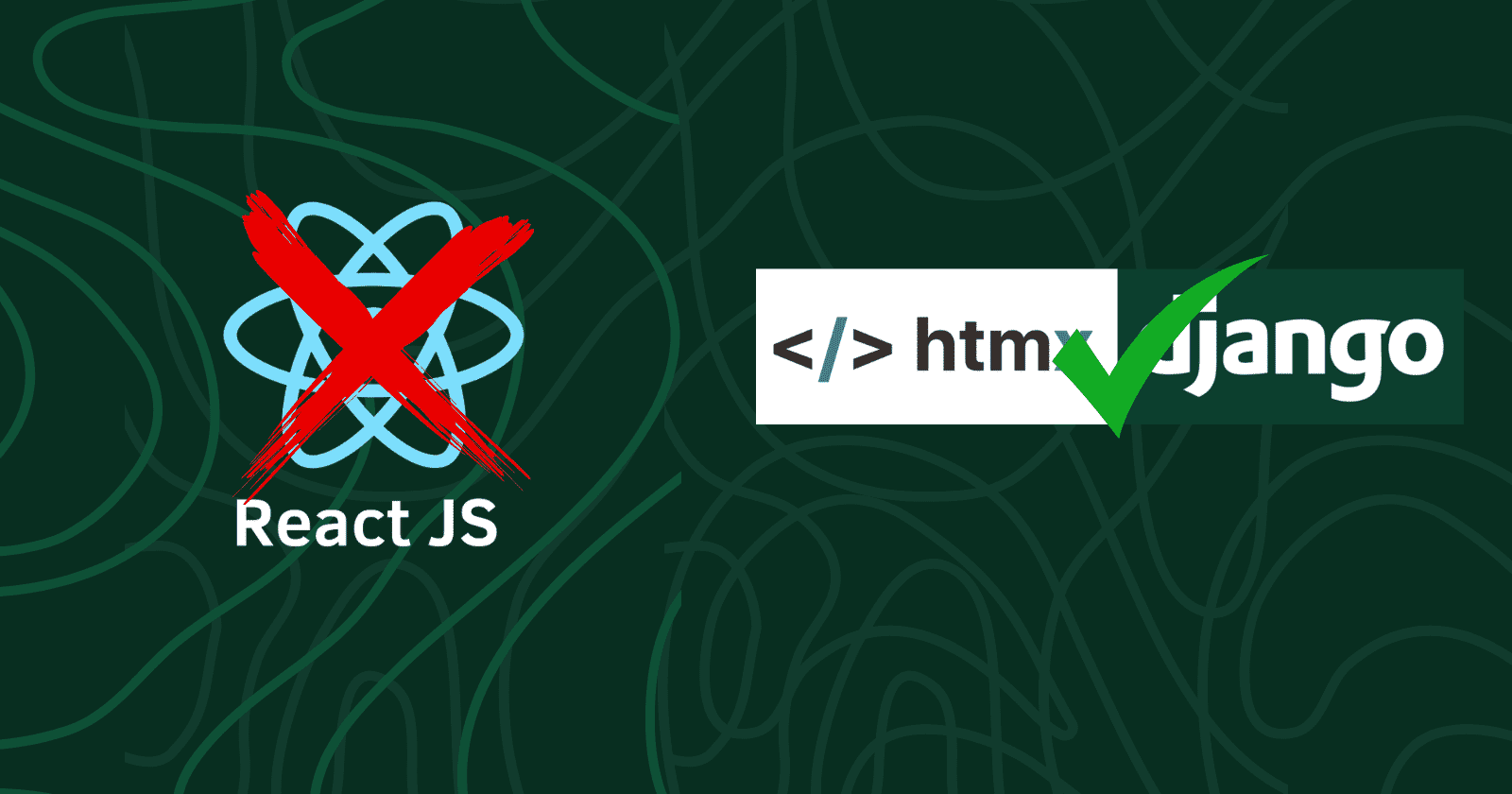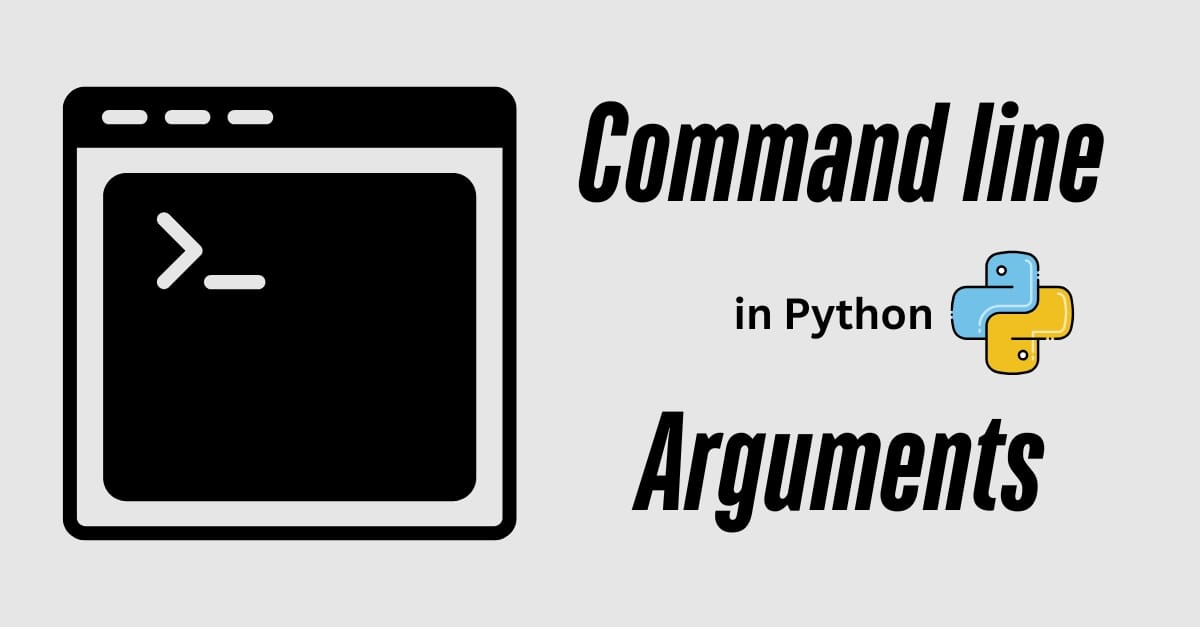Introduction:
In the dynamic landscape of web development, staying abreast of the latest technologies is crucial. One such powerful combination is the integration of HTMX with Django, a blend that leverages modern websockets for enhanced real-time functionality. In this article, we'll delve into the world of HTMX and how it seamlessly integrates with Django to bring a new level of interactivity to your web applications.
Learn Python, HTMX & Django at django-tutorial.dev.
Understanding HTMX:
HTMX, pronounced "hypertext marks," is a lightweight JavaScript library that facilitates seamless communication between the server and the client. Unlike traditional approaches, HTMX enables developers to update specific parts of a web page dynamically, without the need for a full-page reload. It achieves this by using AJAX requests, making it a powerful tool for creating responsive and interactive user interfaces.
Key Features of HTMX:
Before we explore the integration of HTMX with Django, let's highlight some key features that make HTMX a valuable addition to your toolkit:
- Declarative Syntax: HTMX employs a declarative syntax, allowing developers to define dynamic behavior directly in the HTML markup using data attributes. This simplifies the code and enhances readability, promoting a more intuitive development process.
- AJAX Requests Simplified: By abstracting away the complexities of AJAX requests, HTMX streamlines the process of fetching and updating data from the server. This leads to cleaner code and a more efficient development workflow.
- Compatibility with Django: HTMX aligns seamlessly with Django, making it an excellent choice for developers working within the Django ecosystem. Its compatibility extends to various Python frameworks, ensuring flexibility and ease of integration.
Integrating HTMX with Django:
Now, let's explore the steps to integrate HTMX with Django, specifically focusing on leveraging modern web sockets for real-time communication.
1. Installing HTMX:
Begin by installing HTMX in your Django project. You can use package managers like pip to install the necessary dependencies. Ensure that HTMX is included in your project's static files. You can also use a CDN for HTMX like this:
<script src="https://cdnjs.cloudflare.com/ajax/libs/htmx/1.9.10/htmx.min.js"></script>2. Adding HTMX to Templates:
Integrate HTMX into your Django templates by including the necessary script tags. HTMX utilizes data attributes to define behavior, so make sure to annotate the HTML elements that you want to enhance with dynamic functionality.
3. Setting Up Django Views:
Update your Django views to handle the HTMX requests. This involves defining view functions that respond to specific HTMX-triggered actions. Use Django's robust capabilities to process data and return the appropriate response.
4. Incorporating Websockets:
To harness the power of modern websockets, consider integrating Django Channels into your project. Django Channels extends Django to handle WebSockets, enabling bidirectional communication between the server and the client.
5. Real-Time Updates:
With HTMX and Django Channels in place, you can achieve real-time updates on your web pages. For example, implement a chat application where messages are sent and received in real-time, providing a seamless and interactive user experience.
Benefits of the Integration:
The integration of HTMX with Django, coupled with modern servers, offers several benefits to developers and end-users alike:
- Enhanced User Experience: Real-time updates create a more engaging and interactive user experience. Whether it's live notifications or dynamic content updates, users will appreciate the responsiveness of the application.
- Reduced Server Load: By updating only the necessary parts of a page, HTMX reduces the server load compared to traditional full-page reloads. This optimization leads to a more efficient use of server resources.
- Simplified Development: The declarative syntax of HTMX and the compatibility with Django streamline the development process. Developers can focus on building features without getting bogged down by complex AJAX implementations.
- Scalability: Modern websockets, facilitated by Django Channels, pave the way for scalable and real-time applications. Whether you're building a collaborative editing tool or a live dashboard, the integration sets the stage for future scalability.
Polling with Django and HTMX:
Polling is when a client requests a particular piece of data at regular intervals (maybe every x seconds) and the server reverts with a usual response with the required data. This can be useful on a collaborative/team application, where a user's action needs to be reflected on another's screen.
Example:
Below is an example of polling to implement a Kanban board in some sort of development software:
<div class="htmx-poller"
hx-target="#board"
hx-swap="innerHTML"
hx-get="{% url 'get_board' board.id %}"
hx-trigger="every 2s"></div>
<div id="board"></div>
In the above code snippet, we are fetching the board from the server every 2 seconds and replacing the response with whatever was inside the #board div.
HTMX Trigger Actions: Examples
HTMX offers a variety of trigger actions to dynamically interact with elements on a web page. Below are examples of commonly used trigger actions:
1. Click Trigger
Perform an action when an element is clicked. This is useful for buttons or links.
<button hx-get="/example-endpoint" hx-target="#result">Click Me</button>
<div id="result"></div>
When the button is clicked, the response from /example-endpoint will replace the content of the #result div.
2. Hover Trigger
Trigger an action when an element is hovered over.
<div hx-get="/hover-endpoint" hx-trigger="mouseover" hx-target="#hover-result">
Hover over me!
</div>
<div id="hover-result"></div>
The content of the #hover-result div will update when the user hovers over the element.
3. Focus Trigger
Trigger an action when an input field gains focus.
<input hx-get="/focus-endpoint" hx-trigger="focus" hx-target="#focus-result" placeholder="Focus on me!">
<div id="focus-result"></div>
When the input field is focused, the content of #focus-result will update.
4. Input Trigger
Trigger an action when the value of an input field changes.
<input hx-get="/input-endpoint" hx-trigger="input" hx-target="#input-result" placeholder="Type something...">
<div id="input-result"></div>
As the user types in the input field, the #input-result div will update dynamically.
5. Submit Trigger
Trigger an action when a form is submitted.
<form hx-post="/submit-endpoint" hx-target="#submit-result">
<input type="text" name="data" placeholder="Enter something">
<button type="submit">Submit</button>
</form>
<div id="submit-result"></div>
The #submit-result div will update with the response when the form is submitted.
6. Keyup Trigger
Trigger an action when a key is released while typing.
<input hx-get="/keyup-endpoint" hx-trigger="keyup" hx-target="#keyup-result" placeholder="Press any key...">
<div id="keyup-result"></div>
Each key release will trigger a request to /keyup-endpoint, updating the #keyup-result div.
7. Load Trigger
Trigger an action when the page or a specific element is loaded.
<div hx-get="/load-endpoint" hx-trigger="load" hx-target="#load-result"></div>
<div id="load-result"></div>
When the page loads, the content of the #load-result div will be replaced with the response from /load-endpoint.
8. Visibility Trigger
Trigger an action when an element becomes visible in the viewport (useful for lazy loading).
<div hx-get="/visibility-endpoint" hx-trigger="revealed" hx-target="#visibility-result">
Scroll down to load more!
</div>
<div id="visibility-result"></div>
The #visibility-result div will update when the user scrolls down, and the element becomes visible.
9. Custom Event Trigger
Trigger an action on a custom event.
<div hx-get="/custom-event-endpoint" hx-trigger="myCustomEvent" hx-target="#custom-event-result">
Custom Event Trigger
</div>
<div id="custom-event-result"></div>
<script>
document.querySelector('div').dispatchEvent(new Event('myCustomEvent'));
</script>
This example triggers the custom event myCustomEvent, causing the content of #custom-event-result to update.
Conclusion:
These examples demonstrate the flexibility of HTMX triggers. By combining these triggers with Django's robust backend capabilities, you can create highly interactive and responsive web applications.
Reject React.JS, embrace HTMX! The integration of HTMX with Django offers a simpler, more efficient, and highly interactive alternative to building modern web applications. With real-time capabilities and seamless server-client communication, HTMX proves to be a game-changer in the web development landscape.
Frequently Asked Questions (FAQ)
1. What is HTMX and how is it different from JavaScript frameworks like React or Vue?
HTMX is a small JavaScript library that lets you manage dynamic behavior in HTML directly using data attributes. HTMX does not require a sophisticated frontend build system or component-based architecture, in contrast to React or Vue. For Django developers who prefer server-rendered HTML with little JavaScript, it's perfect.
2. Is HTMX production-ready for real-time applications?
Yes, HTMX is actively maintained and stable. It can support real-time features like chat, collaborative editing, live notifications, and more when paired with Django Channels or other websocket technologies.
3. Do I need to learn JavaScript to use HTMX?
Very little. HTMX is intended to be utilized directly in your HTML through the use of hx-* attributes. The majority of HTMX use cases do not require a basic understanding of JavaScript, though it can help you handle edge cases or extend functionality..
4. Can I use HTMX without Django Channels?
Absolutely. HTMX can be used with AJAX-like functionality and standard Django views. Django Channels are only required if you wish to use WebSockets to add real-time bidirectional communication.
5. Does HTMX support CSRF protection in Django?
Yes. You must make sure that Django's CSRF token is included in your HTMX requests. This is typically accomplished by adding the token to the <head> of the page and setting up HTMX to send it in headers, frequently using a meta tag or a tiny JavaScript snippet.
6. Can I use HTMX with Django REST Framework (DRF)?
Yes. HTMX can interact with any endpoint that returns HTML, JSON, or any content type you can parse. While DRF typically returns JSON, you can build hybrid views or write serializers that serve HTMX-friendly responses.
7. How does HTMX handle browser history and back/forward buttons?
HTMX supports history management through its hx-push-url attribute. You can push state into the browser history, allowing back/forward navigation to work as expected with dynamic content.
8. Is HTMX SEO-friendly?
Search engines can still access all of the essential content because HTMX improves server-rendered pages. Because of this, HTMX is far more SEO-friendly than complex frontend frameworks that depend on client-side rendering.
9. Are there any performance concerns with polling every few seconds?
Polling can become inefficient if the interval is too short or the response payload is large. For highly dynamic data, consider WebSockets. For moderately updated content, polling every few seconds is often sufficient and simpler to implement.
10. Where can I learn more about HTMX and Django integration?
Visit django-tutorial.dev for hands-on tutorials, real-world projects, and advanced guides on using HTMX and Django together.






No comments yet. Be the first to comment!